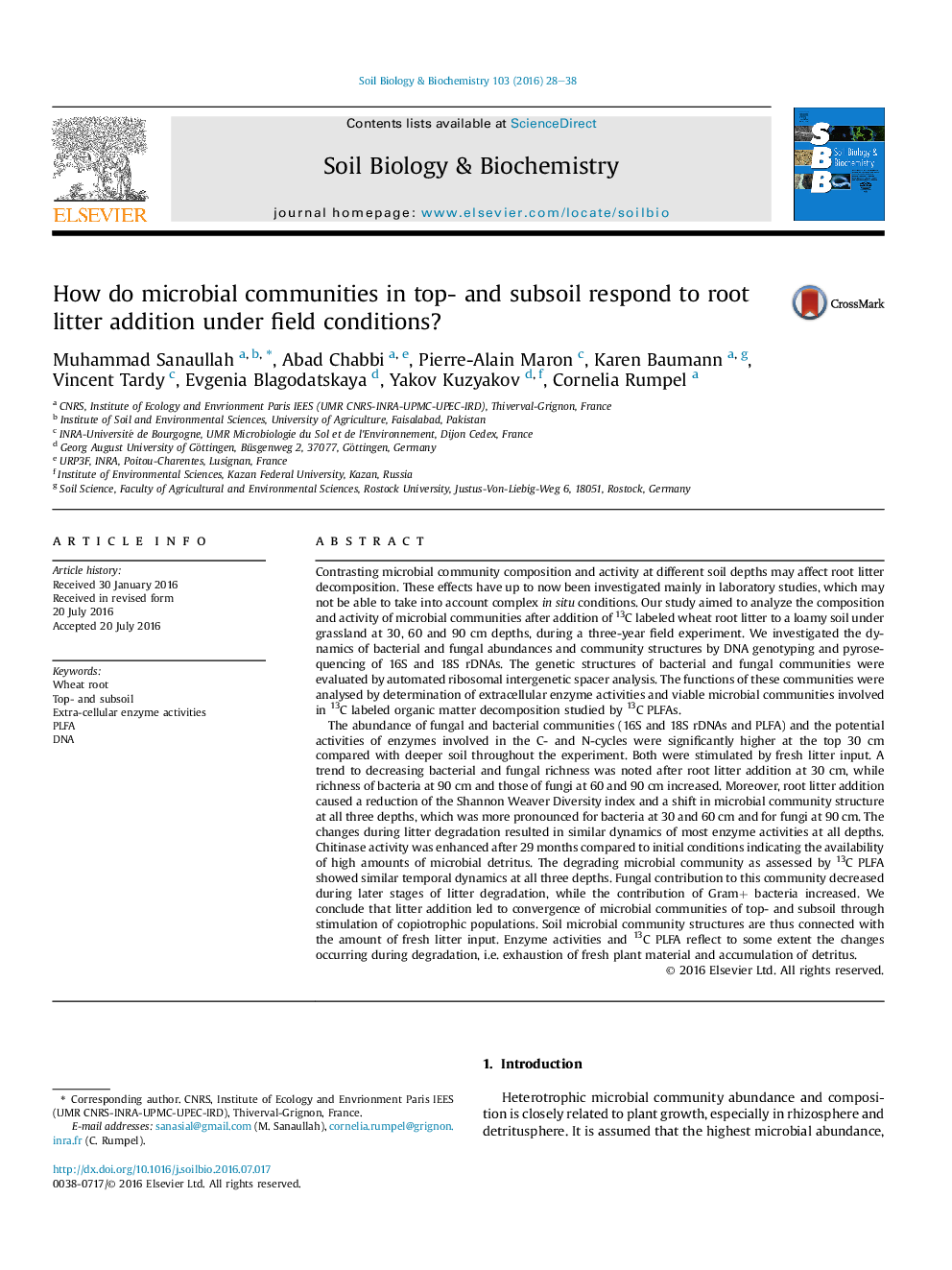| Article ID | Journal | Published Year | Pages | File Type |
|---|---|---|---|---|
| 8363170 | Soil Biology and Biochemistry | 2016 | 11 Pages |
Abstract
The abundance of fungal and bacterial communities (16S and 18S rDNAs and PLFA) and the potential activities of enzymes involved in the C- and N-cycles were significantly higher at the top 30Â cm compared with deeper soil throughout the experiment. Both were stimulated by fresh litter input. A trend to decreasing bacterial and fungal richness was noted after root litter addition at 30Â cm, while richness of bacteria at 90Â cm and those of fungi at 60 and 90Â cm increased. Moreover, root litter addition caused a reduction of the Shannon Weaver Diversity index and a shift in microbial community structure at all three depths, which was more pronounced for bacteria at 30 and 60Â cm and for fungi at 90Â cm. The changes during litter degradation resulted in similar dynamics of most enzyme activities at all depths. Chitinase activity was enhanced after 29 months compared to initial conditions indicating the availability of high amounts of microbial detritus. The degrading microbial community as assessed by 13C PLFA showed similar temporal dynamics at all three depths. Fungal contribution to this community decreased during later stages of litter degradation, while the contribution of Gram+ bacteria increased. We conclude that litter addition led to convergence of microbial communities of top- and subsoil through stimulation of copiotrophic populations. Soil microbial community structures are thus connected with the amount of fresh litter input. Enzyme activities and 13C PLFA reflect to some extent the changes occurring during degradation, i.e. exhaustion of fresh plant material and accumulation of detritus.
Keywords
Related Topics
Life Sciences
Agricultural and Biological Sciences
Soil Science
Authors
Muhammad Sanaullah, Abad Chabbi, Pierre-Alain Maron, Karen Baumann, Vincent Tardy, Evgenia Blagodatskaya, Yakov Kuzyakov, Cornelia Rumpel,
